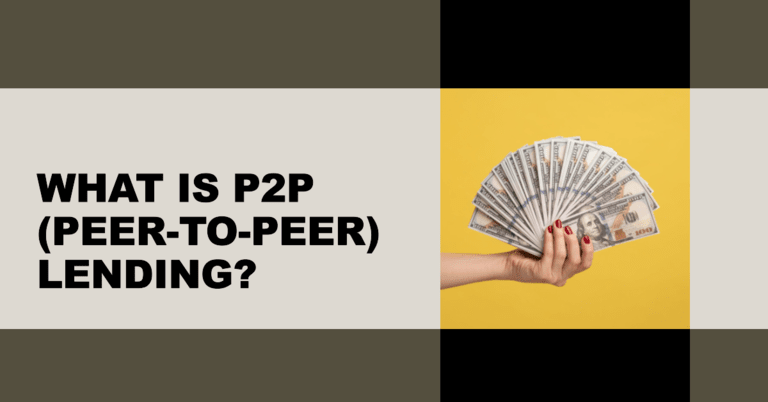Have you recently been invited to join the waitlist for Cred Mint or have you been using the 12% Club? What’s in common between them? They are offering returns better when compared to bank returns of 3 to 6 percent. These FinTechs are offering a new investment option for their users which is termed P2P Lending. This is new to Indian audience and in this article, we intent to simplify how this works and what are it’s benefits for the investor.
P2P lending was officially recognized in India during the year 2017. It is recognized and regulated by the Reserve Bank of India (RBI). With
The Concept
As opposite for the traditional method of borrowing money from a bank or an institution, peer to peer lending introduces an online system where individuals and businesses are able to lend and borrow directly from each other without any intermediary and involvement of financial institutions such as banks or NBFCs.
There are registered (with RBI) lending platforms who act as intermediaries between lenders and borrowers. These platforms facilitate the risk assessment of borrowers, analyze the credit worthiness and assign them a credit rating based on which the borrowers are able to determine the rate of interest which they will pay on their loan. These intermediaries also take up the responsibility of servicing the loans.
Who Are The Borrowers?
There are two types of borrowers: Individuals and Business
Individual borrowers mostly seek personal loans to fulfill their individual needs such as home improvements, purchase of vehicles, education loans or other expenses. These borrowers may have faced difficulties from banks in obtaining loans due to lack of collateral or credit history.
Business borrowers may seek loans in order to fulfill their working capital, plant and machinery needs, inventory management and other administrative expenses. These businesses are mostly startups and MSMEs which face difficulties in obtaining loas from bank due to their limited operating history and higher risk profile.
Who Are The Lenders?
Lenders in P2P lending are mostly individual investors who are looking for an alternative investment option that can offer higher returns than traditional investment options. These investors can lend small amounts of money to multiple borrowers, diversifying their investment portfolio and reducing the overall risk.
How Does P2P Lending Work?
P2P lending platforms act as marketplaces where lenders and borrowers are matched based on their requirements. Borrowers can create a profile and apply for a loan by providing information such as loan amount, duration, and interest rate they are willing to pay. Lenders can then browse through the loan requests and decide which loans they want to invest in.
Once a borrower is selected, the loan amount is disbursed to the borrower’s account. The borrower then pays back the loan amount along with the interest over a predetermined period of time. The P2P lending platform deducts a small fee from the interest earned by the lender as a commission for facilitating the loan.
| Advantages for Investors | Advantages for Borrower |
| Higher returns due to higher interest rates charged on loans | Access to credit for borrowers who may not qualify for loans from traditional financial institutions |
| Diversifiable across multiple loans and borrowers | Lower interest rates compared to rates offered by banks |
| Access to options according to risk tolerance and investment objectives | Quick access to credit as platforms have faster approval and funding process when compared to banks |
| More transparency as lending platforms provide more detailed information about borrowers and their requests | Quick access to credit as platforms have faster approval and funding process when compared to traditional banks |
| Disadvantages for Investors | Disadvantages for Borrowers |
| Ther is a risk of default by borrowers which could result in losses | Lower credit history may result in higher interest rates |
| Loans are typically illiquid which may possibly not allow the investor to sell the loan at fair market value | Platforms may charge borrowers fees for loan serving and other services |
| Regulator uncertainty as P2P lending is relatively new and evolving industry therefore, changes in regulations may affect investors | Borrowers who fail to make loan payments may severely affect their credit history |
| Limited information about borrowers since platforms may not be as tough in checking background data as compared to banks | Borrowers who fail to make loan payments may severely afftect |
In conclusion, P2P lending is a new and innovative investment option that offers higher returns and diversification for investors, while providing access to credit for individuals and businesses who may have been overlooked by traditional financial institutions. However, it’s important for investors to understand the risks involved and conduct thorough research before investing in P2P lending.

Finance graduate with a strong desire to understand the complexities of financial markets. I make financial judgments for my investments based on the information I gained during my academic education. I write articles about financial literacy for finnute.in in order to promote financial literacy among the general public.

Leave a Reply
You must be logged in to post a comment.